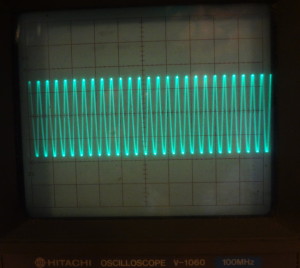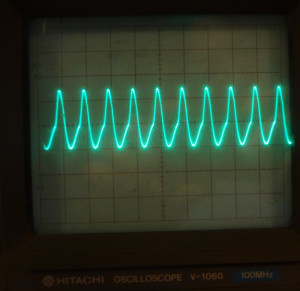After digging a bit into the manual and figuring out what buttons I should be pressing, I was finally able to get the oscilloscope to give me some waveforms at some of the test points on CC1. No indication of what the time base is (have to figure out what buttons to press to make the text display again) but it’s progress at least. I’m just tickled that I’m able to get any kind of waveforms at all.
This is the nice sine wave out of the U6 50 MHz oscillator chip

At the BFO test point, this is what I got

Based on this, the BFO would seem to be in good shape.
At the VFO test point, the trace looks like this

It was tough to get a stable trace out of this, and I had to wiggle the probe around a bit before I could get the waveform. I wonder if that could be an indication of any kind of problem.
Diagnostic work continues on CC1 and now I have another tool I can use on my workbench. There’s still a bunch of stuff I need to learn about this scope, so I’ll be spending more time with the manual. There’s supposed to be some text on the display as well which I think I made go away in my earlier attempts at playing with the scope. Need to figure out how to bring those back.
